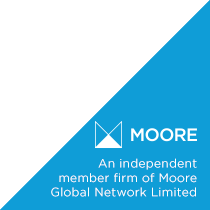Financial planning year-end tips

30 January 2017
As we approach the end of the financial year, Chartered Financial Planner and Johnston Carmichael Wealth Managing Director Craig Hendry shares his top financial planning year-end tips
1. Utilise your ISA allowance
It is important to make the most of any tax efficient wrappers during the financial year. Most individuals have Individual Savings Accounts (ISAs) whether it be a cash ISA or a stocks and shares ISA. Every UK resident over the age of 18* has an annual ISA allowance which is £15,240 for the 2016/17 tax year. This can be subscribed to either as a cash ISA, a stocks and shares ISA or a combination of the two. As the allowance is “use it or lose it”, I would encourage those who have not yet utilised their allowance to do so. In the new tax year, (from 6 April 2017) the ISA allowance will increase to £20,000.
*For those under 16, parents/grandparents can subscribe to a Junior ISA (2016/17 allowance £4,080 rising to £4,128 in 2017/18). For those between 16 and 18, depending on where their birthdays fall, may also have £15,240 (2016/17) cash ISA allowance in addition to their Junior ISA Allowance.
2. Contribute to Pensions
A pension is arguably one of the most tax efficient solutions available as an individual will receive tax relief on their contributions and the growth within your pension fund is free of capital gains and income tax. The annual allowance for the current tax year is a maximum of £40,000 and this includes contributions from an individual and their employer. An individual can contribute up to 100% of their relevant UK earnings subject to a maximum of £40,000.
From this tax year, tapering applies to the annual allowance for high earners. For those earning in excess of £150,000 a year for the 2016/17 tax year the allowance can fall to a maximum of £10,000 depending on an individual’s circumstances and they should exercise care when making contributions in excess of £10,000.
It is worth noting that even if you have no income, you can still contribute £3,600 into a pension.
Unused Annual Allowances can be carried forward from the three previous tax years. As these calculations can be tricky I would suggest that anyone looking to utilise carry forward seeks financial advice.
3. Inheritance Tax Planning
Many individuals are unaware that they have an annual gift allowance of £3,000 which is exempt from inheritance tax. In addition, individuals can make unlimited gifts of up to £250. The caveat here is that the donor cannot gift to the same person more than once.
4. Alternative Investment
Other vehicles available for financial planning include Enterprise Investment Schemes (EISs) and Venture Capital Trusts (VCTs).
An EIS invests in a single small (sometimes start up) company that is usually unquoted. The investor can receive income tax relief of 30% of the first £1m invested. They can also be useful for those with large capital gains as there is unlimited capital gains tax deferral available. EISs are exempt from capital gains tax if held for three years and exempt from inheritance tax if they are held for more than two years. Any losses suffered on an EIS can be offset against other capital gains.
VCTs were introduced in 1995 to encourage investment in early-stage UK companies by offering tax incentives to investors. VCTs are exempt from capital gains tax and no income tax is due on any dividends. As with EISs, VCTs also benefit from income tax relief of 30%, however, relief is only available on the first £200,000 on a VCT investment. To qualify for these tax breaks the investment must be held for a period of five years.
Given the type of companies in which both EISs and VCTs invest, there is a high level of risk attached to these solutions and as such they are not suitable for everyone. For further information on EISs or VCTs please contact your Johnston Carmichael Wealth financial planner.
5. Review Investments
This time of year is the perfect time to review your investments and ensure that your current portfolio remains suitable for your needs, time horizons and risk tolerance.
6. Use Capital Gains Tax Allowances
As part of the review of your investments that are not held in tax efficient wrappers, I would suggest that individuals seek to utilise their annual capital gains tax allowance of £11,100 (for the 2016/17 tax year). Like your ISA allowance, your annual capital gains tax allowance cannot be carried forward, however, losses in the current tax year can be carried forwarded for up to four tax years to offset gains made at a later date.
Got a query?
Get in touch with me at Craig.Hendry@jcwealth.co.uk or your usual Johnston Carmichael Wealth contact.
The purpose of this article is to provide technical and generic guidance and should not be interpreted as a personal recommendation or advice. All statements concerning the tax treatment of products and their benefits are based on our understanding of current tax law and HMRC practices. The tax treatment depends on the individual circumstances of each client and may be subject to change in the future. Not all Inheritance Tax Planning solutions are regulated by the Financial Conduct Authority.
Disclaimer: While all possible care is taken in the completion of this blog, no responsibility for loss occasioned by any person acting or refraining from action as a result of the information contained herein can be accepted by this firm.
